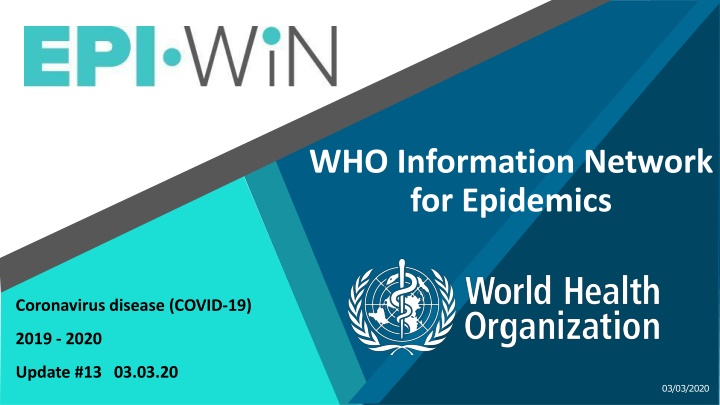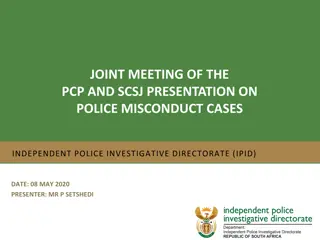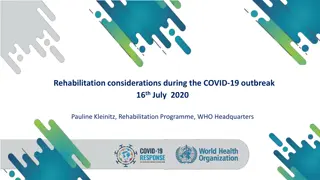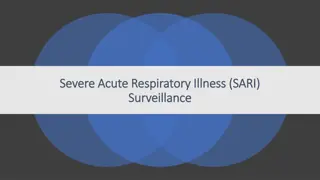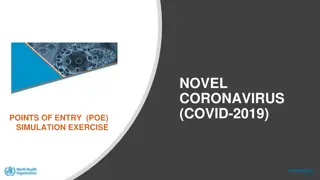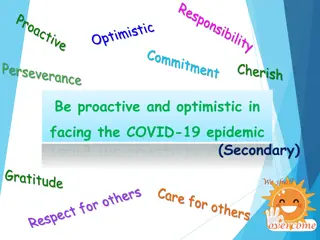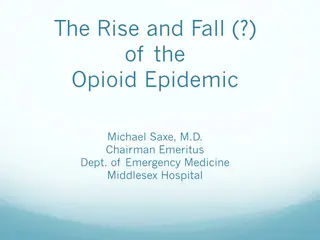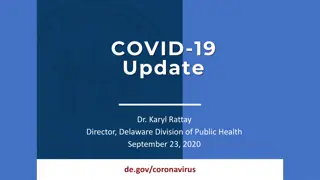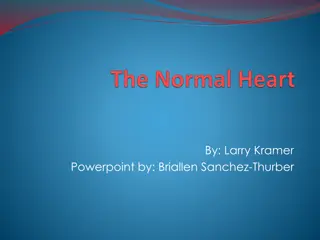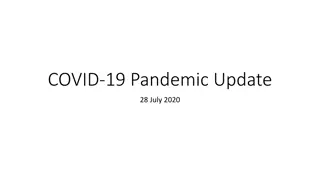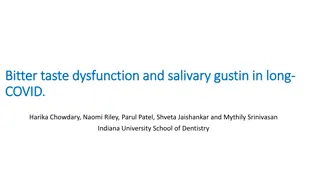WHO Epidemic Update: COVID-19 Cases and Insights
Current WHO updates on COVID-19 cases globally, key epidemiological insights from China, new cases since February, and transmission hotspots. Details include confirmed cases, deaths, country-specific data, disease progression, and transmission patterns.
Download Presentation

Please find below an Image/Link to download the presentation.
The content on the website is provided AS IS for your information and personal use only. It may not be sold, licensed, or shared on other websites without obtaining consent from the author.If you encounter any issues during the download, it is possible that the publisher has removed the file from their server.
You are allowed to download the files provided on this website for personal or commercial use, subject to the condition that they are used lawfully. All files are the property of their respective owners.
The content on the website is provided AS IS for your information and personal use only. It may not be sold, licensed, or shared on other websites without obtaining consent from the author.
E N D
Presentation Transcript
WHO Information Network for Epidemics Coronavirus disease (COVID-19) 2019 - 2020 Update #13 03.03.20 03/03/2020
Current Situation Cases by country/territory/area (as of 3 March 6am Gva) Updates from last 24 hours Globally: 90,893 confirmed cases and 3,110 deaths China: 129 new confirmed cases: 88% (114) cases from Hubei 31 new deaths: Hubei (100%) 129 new suspected cases Outside China: 1,848 new confirmed cases: Republic of Korea(600), Iran (Islamic Republic of)(523), Italy(347), France(91), Spain(69), Japan(29), Germany(28), United States of America(26), Kuwait(10), Canada(8), Austria(8), San Marino(7), Iraq(7), Belgium(7), Switzerland(6), Norway(6), Iceland(7), Australia(6), Netherlands(5), Malaysia(5), Ecuador(5), Qatar(4), Algeria(4), The United Kingdom(3), Mexico(3), Lebanon(3), Israel(3), Singapore(2), Portugal(2), Morocco(2), Indonesia(2), India(2), Croatia(2), Bahrain(2), Tunisia(1), Thailand(1), Sweden(1), Senegal(1), Saudi Arabia(1), Russian Federation(1), Pakistan(1), Latvia(1), Jordan(1), Finland(1), Egypt(1), Dominican Republic(1), Denmark(1), Andorra(1) 36 new deaths: Italy (17), Iran (Islamic Republic of)(12), Republic of Korea(6), France(1) Source: WHO Situation dashboard https://experience.arcgis.com/experience /685d0ace521648f8a5beeeee1b9125cd 03/03/2020
New Cases of COVID-19 since 1 February 2020 4500 4000 New Cases in China New Cases Outside of China 3500 Number of new, confirmed daily cases 3000 2500 2000 1500 1000 500 0 03/03/2020
Key epidemiological insights from China At diagnosis approx. 80% of cases are mild/moderate; 15% severe; 5% critical Disease progression: approx. 10-15% of mild/moderate cases become severe, and approximately 15-20% of severe become critical Average times: from exposure to symptom onset is 5-6 days after infection; from symptoms to recovery for mild cases is 2 weeks; from symptoms to recovery for severe cases is 3-6 weeks; from symptoms onset to death is from 1 week (critical) to 2-8 weeks. COVID-19 much less frequent in children than adults, children tend to have milder disease 03/03/2020
Current COVID-19 Transmission Hotspots 03/03/2020
Hotspot: Italy Hotspot: Italy Main features of the outbreak: Confirmed cases in Italy 2500 2036 confirmed cases 52 deaths 2036 2000 An initial investigation by Italian authorities has found several clusters of cases in different regions of northern Italy, with evidence of local transmission of COVID-19. Number of confirmed cases 1689 1500 Press release: http://www.euro.who.int/en/health- topics/health-emergencies/coronavirus-covid- 19/news/news/2020/2/joint-who-and-ecdc-mission-in- italy-to-support-covid-19-control-and-prevention-efforts 1128 1000 888 650 500 400 322 229 9 124 3 0 76 21-Feb 22-Feb 23-Feb 24-Feb 25-Feb 26-Feb 27-Feb 28-Feb 29-Feb 2-Mar 3-Mar 1-Mar 03/03/2020
Hotspot: Republic of Korea Main features of the outbreak: Confirmed cases in the Republic of Korea 6000 4812 confirmed cases 28 deaths 5000 4812 Approximately 77% have been reported from Daegu and Gyeongbuk area. 4212 Number of confirmed cases 4000 3736 The recent deaths are all from hospitalized patients 3150 3000 The majority of the transmission to date is confined to people who were in a specific place at a specific time 2022 2000 1766 1261 1000 977 602763 3151104 346 204 0 27-Feb 18-Feb 19-Feb 20-Feb 21-Feb 22-Feb 23-Feb 24-Feb 25-Feb 26-Feb 28-Feb 29-Feb 1-Mar 2-Mar 3-Mar 03/03/2020
Hotspot: Islamic Republic of Iran Hotspot: Islamic Republic of Iran Main features of the outbreak: Confirmed cases in the Islamic Republic of Iran 1501 confirmed cases 1600 1501 66 deaths 1400 A WHO team is on the ground in Iran to provide support 1200 Number of confirmed cases 978 1000 800 600 593 400 388 245 200 141 43 1828 2 5 6195 25-Feb 0 20-Feb 21-Feb 22-Feb 23-Feb 24-Feb 26-Feb 27-Feb 28-Feb 29-Feb 1-Mar 2-Mar 3-Mar 03/03/2020
The 3 Cs Scenarios Key message: WHO believes that containment is possible in all settings. However, the measures taken by countries NOW to prepare for possible scenarios will determine the course of the outbreak. 03/03/2020
Objectives: DELAY, PREVENT, CARE FOR COVID-19 CASES Cases Clusters Community transmission Community spread Community transmission; cases without an epidemiologic link are common. Slow transmission and reduce impact Clusters Scenario Context No cases or first cases Importation from affected areas or initial case(s), with known link to other cases. Increasing cases or clusters identified with or without an epidemiological link through diagnosis or surveillance. Slow transmission and prevent spread Aim Stop transmission and prevent spread 03/03/2020
COVID-19: Operational Planning Guidelines and COVID-19 Partners Platform to support country preparedness and response In order to assist UN country teams in scaling up country preparedness and response to COVID-19, WHO has developed these learning modules as a companion to the Operational Planning Guidelines to Support Country Preparedness and Response. This 3-module learning package introduces the context for the need for a coordinated global response plan to the COVID-19 outbreak. It provides the required guidance to implement the Operational Planning Guidelines to Support Country Preparedness and Response. https://openwho.org/courses/UNCT-COVID19- preparedness-and-response-EN 03/03/2020
Protecting your community and family members 03/03/2020
What can I do to prevent the spread of COVID-19? If you feel unwell, stay home Do not go to work, to school or to public spaces to avoid transmission of COVID-19 to others in the community. If you are unwell, you should self-isolate and self-monitor to avoid possible transmission to people in your community and family. 03/03/2020
Question: What is self- isolation? Explanation Self-isolation is an important measure in order to avoid transmission of infection to others in the community, including family members. * Answer: Self-isolation is when a person who is ill (i.e., fever or respiratory symptoms), voluntarily or based on his/her health care provider s recommendation, stays at home and does not go to work, school, or public places. * If a person is in self-isolation it is because he/she is ill but not severely ill (requiring medical attention). The person in self-isolation should ideally have a room at home that is separated from other family members. If not possible, spatial distance of at least 1 meter (3 feet) from other family members and the use of a medical mask is recommended for the ill person with respiratory symptoms. The person in self-isolation should have dedicated utensils, plates, cups, towels and linens. * What can I do? If you feel unwell, stay home, and do not go to work and to public spaces. The duration of self-isolation for a person with confirmed diagnosis of COVID-19 should be discussed with the healthcare provider and may require additional laboratory testing. * 03/03/2020
Question: What is self- monitoring? Explanation * Self-monitoring is recommended for those who have been exposed to an individual known to have COVID-19 or who have been in a COVID-19 affected country. Answer: Self-monitoring is done when a person is asymptomatic, and it includes daily measurement of temperature and monitoring for development of clinical symptoms such as cough or difficulty breathing. Self-monitoring is recommended for 14 days after the date of last exposure. * If any symptoms appear, stay home and practice self- isolation. Call your health-care provider or hotline, explain your symptoms and possible exposure and follow the advice provided. Contact your medical provider urgently if you have difficulty breathing. * What can I do? Self-monitor yourself if you think that you might have been exposed to COVID-19 03/03/2020
Science deep-dive 03/03/2020
Update on clinical features in COVID-19: New study published 1,099 patients with laboratory-confirmed COVID-19 across 552 hospitals in 30 provinces of China. Median age of patients: 47 years (IQR 35 58) Signs and symptoms when being admitted to hospital % of patients Median incubation period: 4 days (IQR 2 7) Cough 67.8 3.5% were healthcare workers Fever 43.8 40.9% had no abnormalities on chest X-ray at time of hospital admission Fatigue 38.1 Sputum production 33.7 Shortness of breath 18.7 Median duration of hospitalization: 12 days (Mean 12.8 days Aches and pains (myalgia) 14.9 88.7% of patients developed fever during their hospital stay. Low white blood cell count 83.2 Clinical Characteristics of Coronavirus Disease 2019 in China. Wei-Jie Guan et al. New England Journal of Medicine, February 28, 2020 DOI: 10.1056/NEJMoa2002032 03/03/2020
More information WHO sources: COVID-19 website: https://www.who.int/health-topics/coronavirus WHO Travel Advice:https://www.who.int/ith/en/ Email: EPI-WIN@who.int Website:www.EPI-WIN.com 03/03/2020
